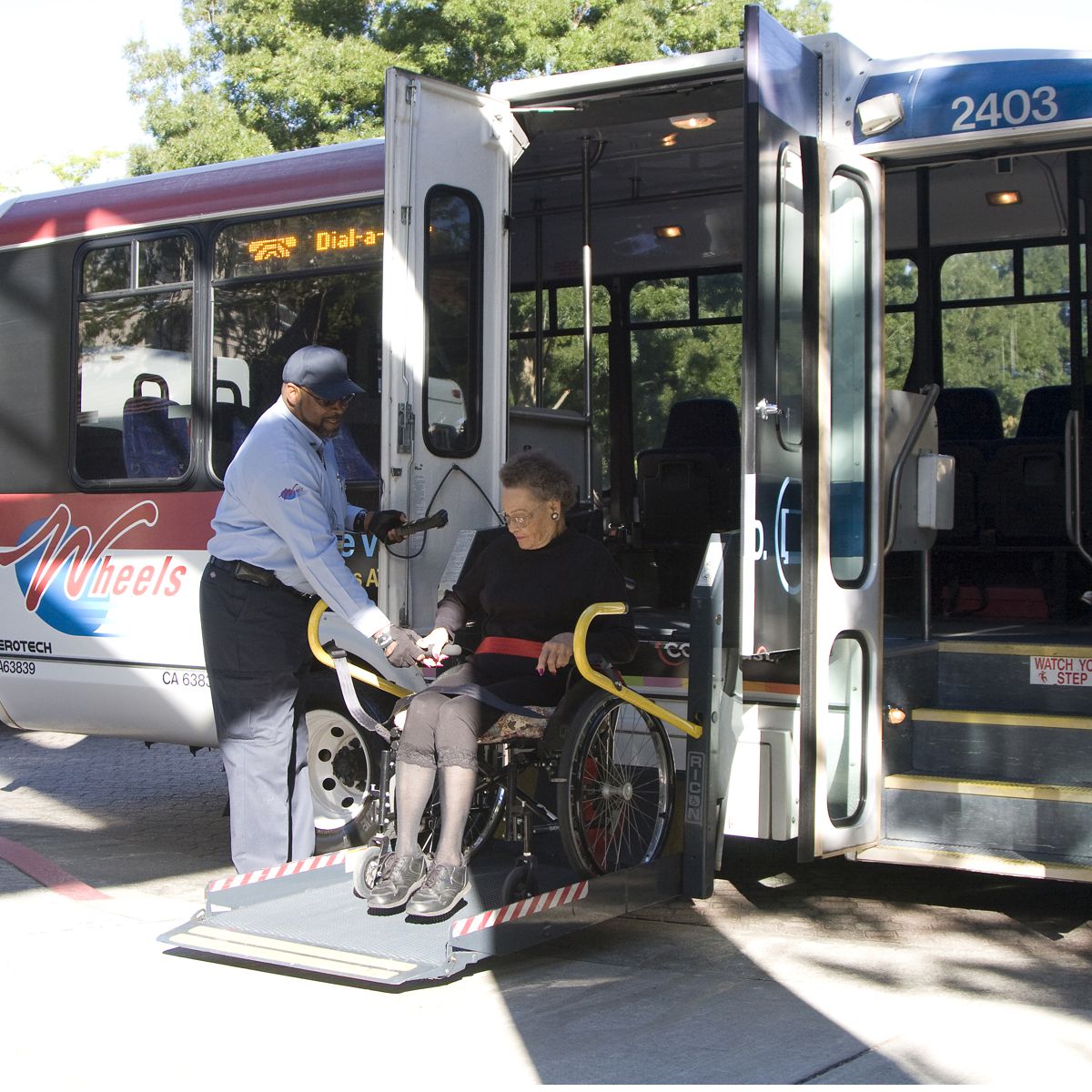One Seat Offers Paratransit Services Between Transit Agencies
One Seat Offers Paratransit Services Between Transit Agencies

Hacienda is located in the heart of the Tri-Valley, with easy access to the Dublin/Pleasanton BART station used by many commuters. That station is also a public transit hub for the Wheels bus service operated by the Livermore Amador Valley Transit Authority (LAVTA). Wheels operates throughout the Tri-Valley, and connects two BART stations, the Altamont Commuter Express train, and the County Connection bus service operated by the Contra Costa Transportation Authority.
Most individuals who work or live at Hacienda enjoy access to safe and affordable public transit. But health conditions make it impossible for some individuals to use BART or public buses. Paratransit services were developed to solve that problem. Typically, cities and counties offer region-based, paratransit services to people unable to use regular buses and trains because of a disability or disabling health condition.
Passengers eligible for paratransit services under the Americans with Disabilities Act, for example, can apply for the Wheels Dial-A-Ride and Para-Taxi programs, which are shared-ride services that collect several passengers to and from specific locations. Individuals who live in Contra Costa can apply for the County Connection LINK shared-ride service. Paratransit users make reservations to use the service and are charged a fee for each one-way trip. Dial-A-Ride users currently pay $3 per person each way, while LINK users are charged $5 each way.
But what if a paratransit passenger needs to travel across two or more transit agency service regions? In 2024, County Connection, LAVTA, Tri Delta Transit, and WestCAT introduced the One Seat Regional Ride (OSR) shared-ride paratransit program. This pioneering program has improved the rider experience significantly, officials say. Before the OSR program was introduced, agencies provided paratransit service coverage within their fixed route service areas only. Passengers who needed to travel across two or more service areas were often forced to wait at a transit hub inside the first agency's service area until a second paratransit agency vehicle arrived to pick them up. Several transfers to different vehicles might be required to reach their destination.
Each transit agency maintains its existing paratransit services; One Seat is strictly for trips that cross transit service areas. Through a shared-cost agreement, the OSR program saves money for agencies and, perhaps more importantly, for passengers as well. Today, passengers pay a single fee to get to their destination and a single fee for their return instead of paying separate fees for each transit area and agency for the destination and separate fees for each transit area and agency for the return. In short, passengers pay less for long paratransit trips that are usually easier to take than using the old system and often faster as well.
"The old system was inefficient because each passenger's individual trip across agency service area borders was actually two or three paratransit bookings done by different agencies, with complicated fare and transfer rules," according to David Mark, Director of Customer Experience for LAVTA. "One Seat is much simpler as a one-stop shop in terms of booking the whole trip instead of having to coordinate between separate agencies. Moreover, paratransit passengers may be older or have medical issues. Staying in one vehicle is a more consistent and comfortable rider experience."
For more information about One Seat Regional Ride, please visit oneseatride.org.
For more information about the Livermore Amador Valley Transit Authority and Wheels, please visit www.wheelsbus.com.




